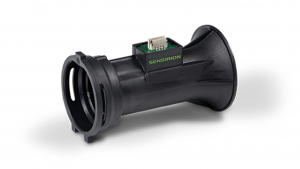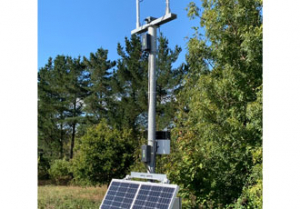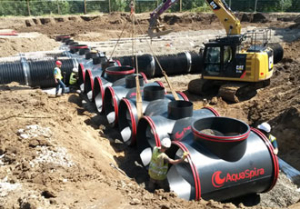Smart Parking Sensor Platform by from Libelium enables city motorists save time and fuel
New Smart Parking technology from Libelium enables cities to make efficient use of their parking resources. The new platform allows consultancies and system integrators to customise and deploy the solution in their local area.
Libelium, a technology leader in wireless sensor networks, announces the launch of its Waspmote-based Smart Parking platform. The new Smart Parking sensor – part of Libelium’s Smart Cities solution – is designed to be buried in parking spaces and to detect the arrival and departure of vehicles. The Smart Parking platform will allow system integrators to offer comprehensive parking management solutions to city councils. By providing accurate information on available parking spaces, motorists save time and fuel and cities reduce atmospheric pollution and congestion.
The quality of city life across the world is negatively impacted by atmospheric pollution and congested roads. Road congestion results in lost time for motorists, wasted fuel and is a major cause of air pollution. A significant contribution to congestion arises from motorists searching for available parking spaces - often requiring a considerable time before they are successful - and is a major cause of driver frustration. Providing accurate information to drivers on where to find available parking spaces helps traffic flow better and allows the deployment of applications to book parking spaces directly from the car.
Alicia Asín, Libelium’s CEO, says “Systems based on Libelium’s new Smart Parking sensor platform enable drivers to find free parking spaces quickly and efficiently. Efficient parking not only means happier motorists, but also reduces CO2 emissions, saves fuel and helps minimise traffic jams”. Smart Parking sensors can be buried in parking spaces and communicate with the rest of the sensor network using Waspmote’s ZigBee radio. Alicia Asín adds, “The first deployment of the platform will be with SmartSantander – a unique city-scale experiment in applications of smart city technology which is already considered as a reference in the Smart Cities field”. In fact, the Network Planning and Mobile Communications Group from the University of Cantabria contributed to the testing and performance improvement of the sensor.
Waspmote’s outstanding power management and over the air programming (OTA) mean that, once installed, parking sensors do not need to be accessed for years. Motes only need to transmit when a parking event – a vehicle arriving or leaving a space – takes place. With suitable batteries a sensor can operate for five years before it needs to be physically accessed for battery replacement. OTA programming enables the software for entire networks to be upgraded efficiently over the radio network without digging up the parking spaces. The low maintenance involved in smart parking sensor networks means that networks with hundreds of nodes can readily be deployed.
Smart parking sensors communicate with their gateway via radios at either 2.4 GHz or 868/900 MHz. For 2.4 GHz ZigBee connections, mesh networks are implemented with routing motes located in street lights. For the lower frequency radios, it is possible for parking sensors to communicate directly with the gateway as the propagation distance is longer.
Parking sensors must be robust enough to be buried under parking spaces. The sensor nodes are supplied in a PVC casing rated at IK10 for mechanical impact protection and at IP67 for ingress protection. The use of PVC ensures that radio communication is not hindered.
Similar articles
More from Libelium Comunicaciones Distribuidas S.L
- Libelium unveils the top 50 Internet of Things Applications 4th May 2012
- Libelium announces Vehicle Traffic Monitoring Platform offering Bluetooth Sensors communicating over ZigBee 2nd November 2011
- Smart Cities platform from Libelium allows system integrators to monitor noise, pollution, structural health and waste management 22nd June 2011
- Smart Parking Sensor Platform by from Libelium enables city motorists save time and fuel 7th June 2011












Write a comment
No comments